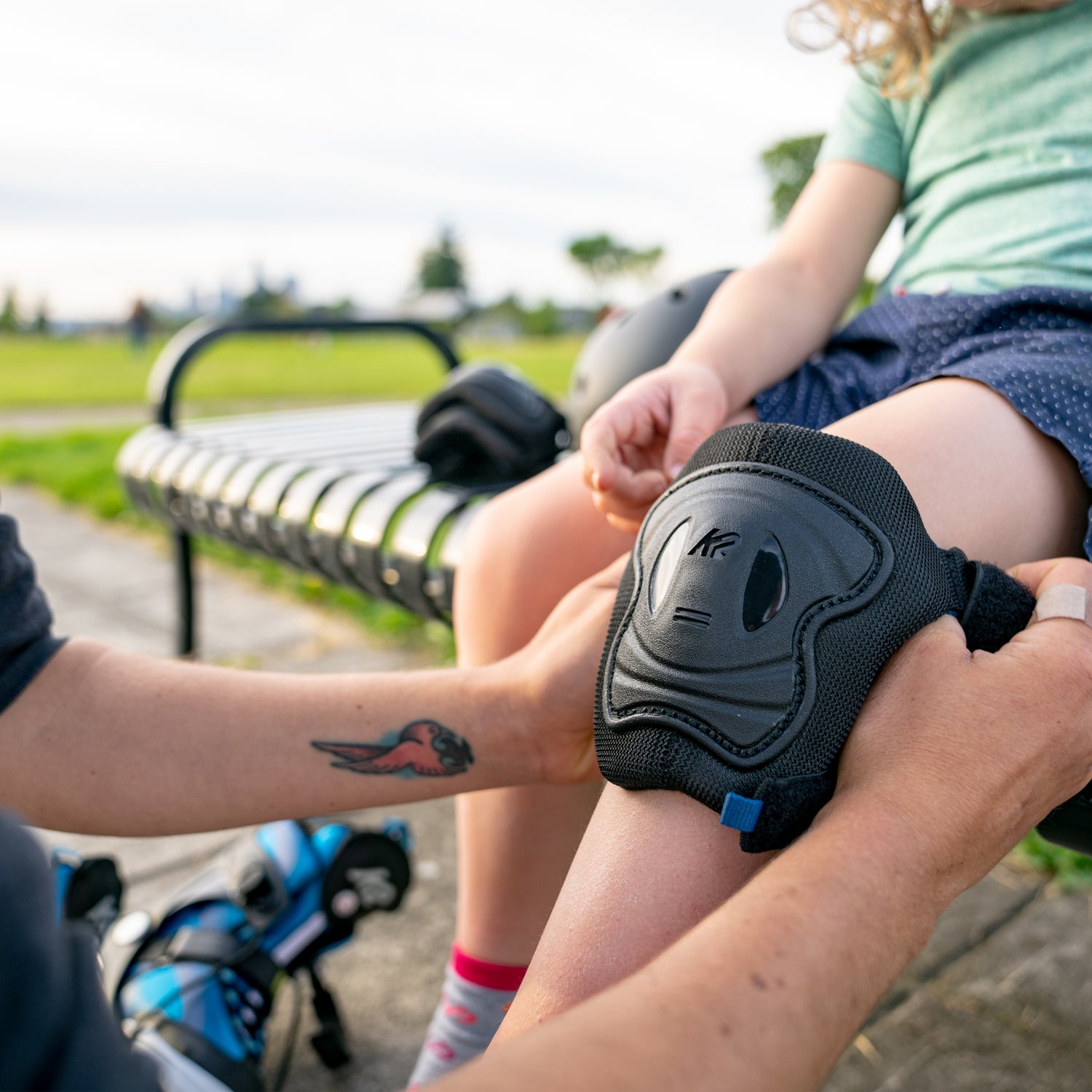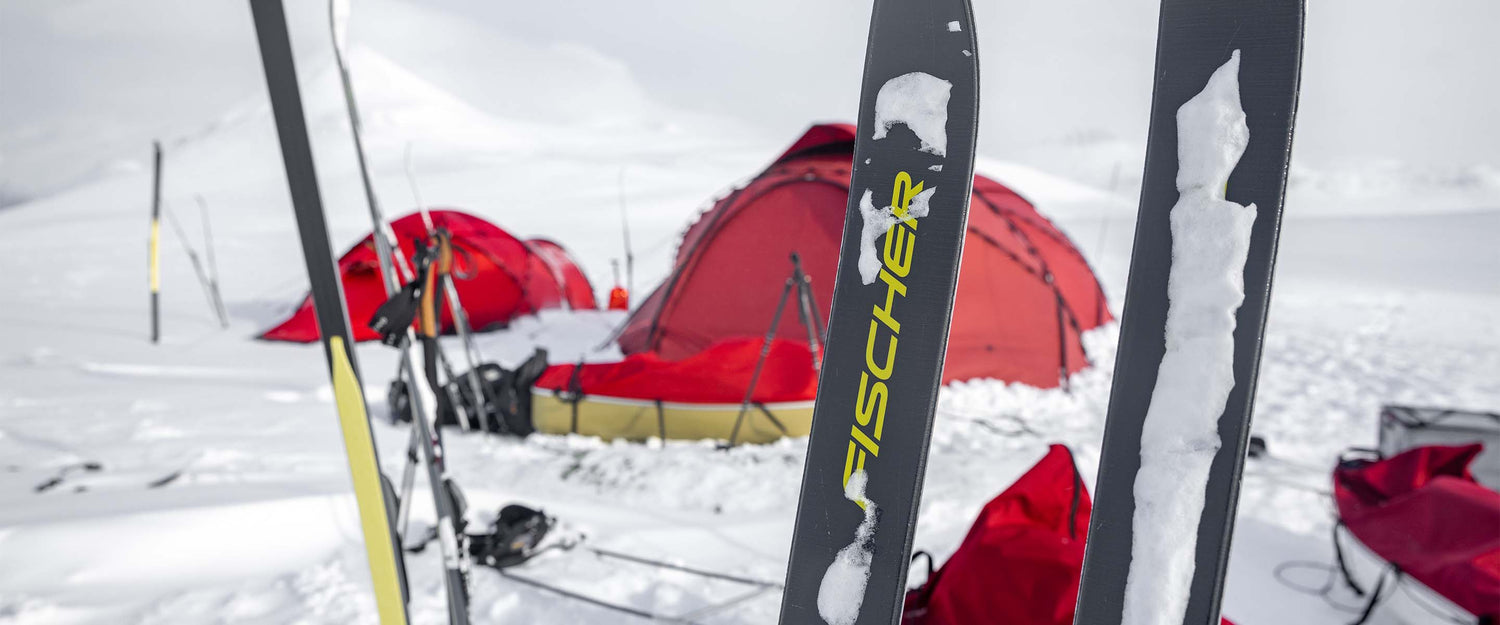1. The difference between classic, backcountry and skate cross-country skis
First, let’s go over the cross-country ski categories. Cross-country skis are divided into three main groups: skis for groomed trails, backcountry skis and skate skis. Within the category of skis for groomed trails, there are touring skis—which you know as classic cross-country skis—which have a sidecut, and racing skis, which have a javelin shape.
Backcountry cross-country skis, on the other hand, have a sidecut, are wider at the tip and sport metal edges. They are designed to travel ungroomed, hilly trails and even make turns on downhills.
Skate skis have a javelin shape but are designed for performance. Their camber is designed to provide maximum pop during the lateral pushing movement that characterizes skate skiing.
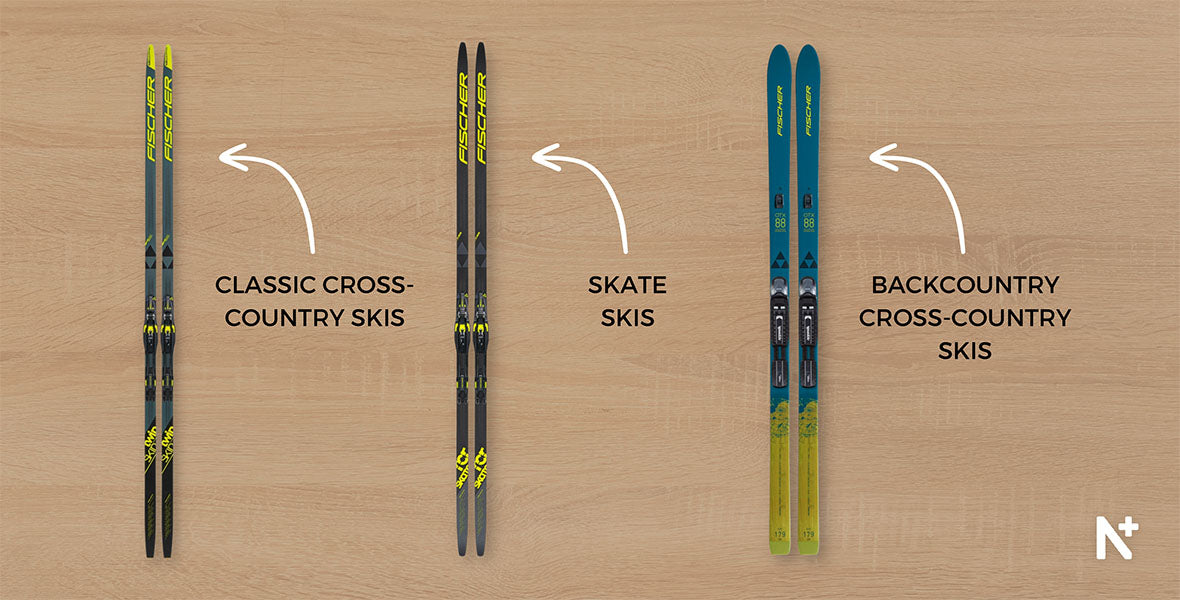
2. What is backcountry cross-country skiing?
The name says it all: this type of cross-country ski is designed for exploring ungroomed trails. Thanks to a tip width over 59 mm, they allow you to stay on the surface of the snow for smooth travel and controlled, precise descents.
In addition, this type of cross-country ski has metal edges that provide better grip on hard surfaces or steeper downhills. Backcountry cross-country skis also have a sidecut like an alpine ski. That said, backcountry cross-country skis are not telemark skis or alpine touring skis. They are truly designed to go the distance.
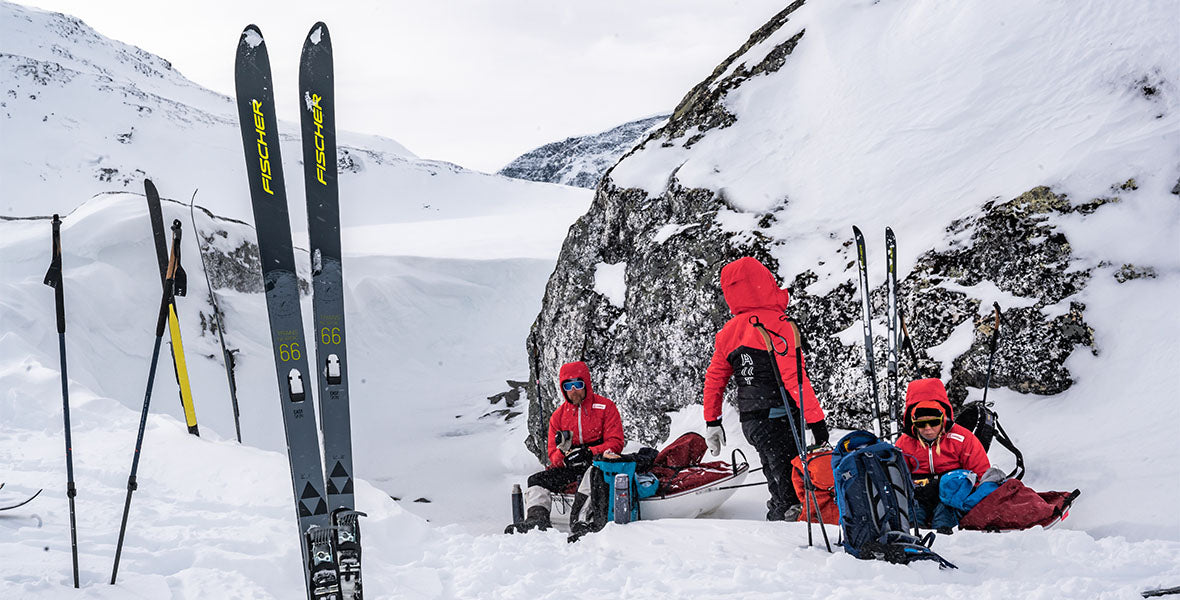
Due to what they are designed for, backcountry cross-country skis have a softer camber. This camber makes them slower than skis with a stiffer camber, which gives you more kick. However, you’re not necessarily looking for performance when you go backcountry cross-country skiing. The idea is to explore, go long distances and be able to travel over snowier terrain.
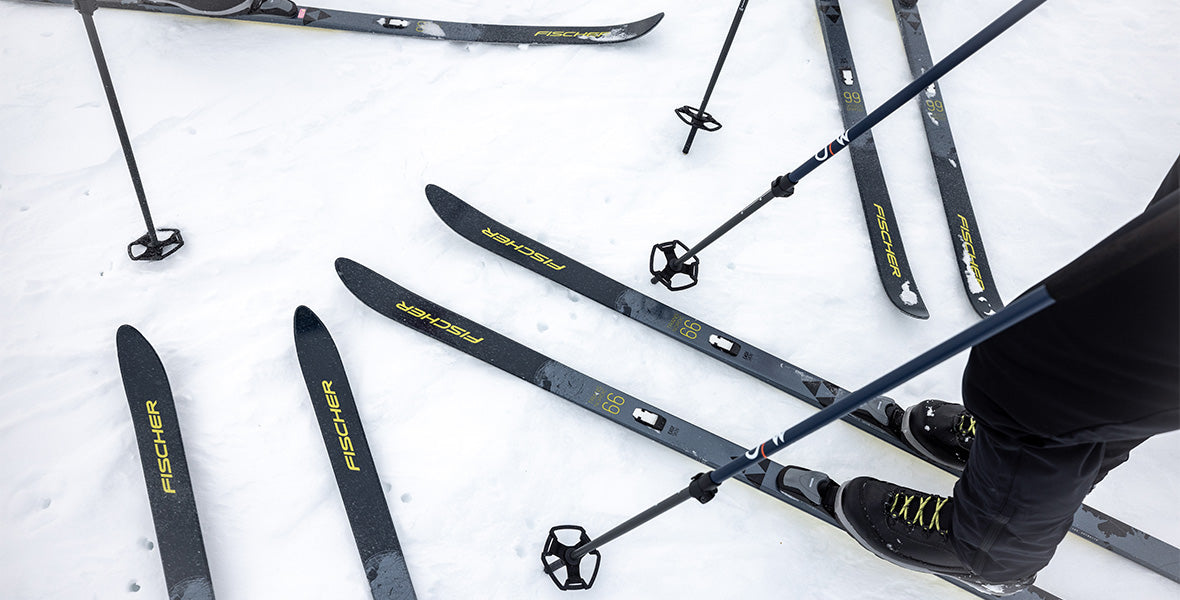
3. Who are backcountry cross-country skis for?
If you like to rack up kilometres in the mountains, explore and make multiple-day traverses, backcountry cross-country skis are for you. Backcountry cross-country skis allow you to cover more territory with much lighter gear.
They also enable you to go cross-country skiing in more lightly used areas than trails groomed for classic cross-country skiing or skating.
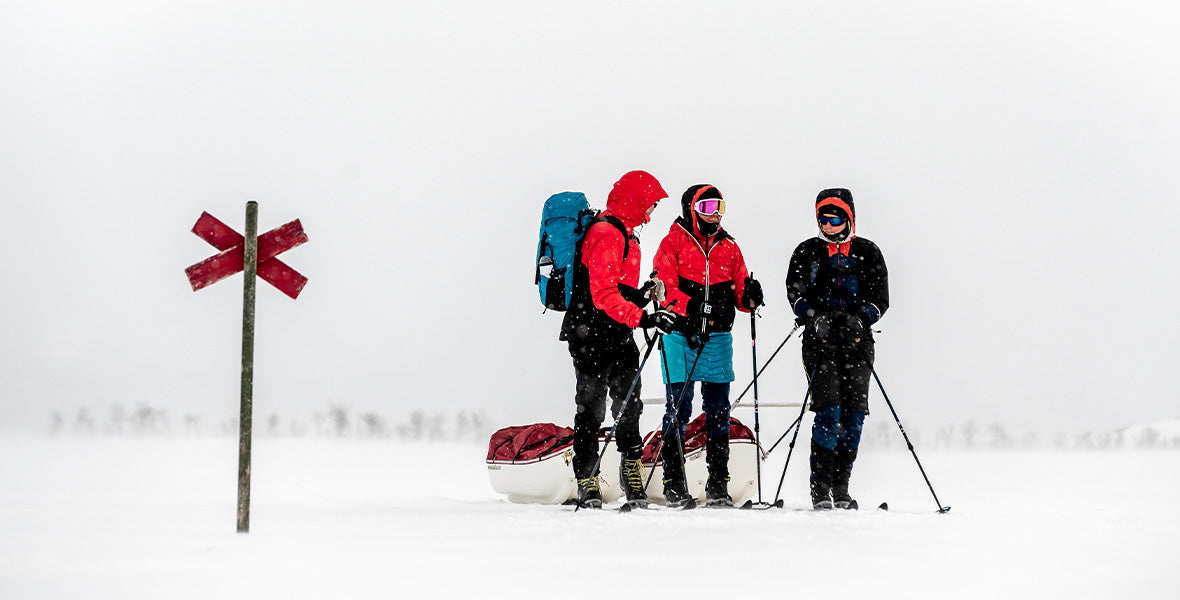
4. Choose the right width for your backcountry cross-country skis
Backcountry cross-country skis have a tip width over 59 mm. There are even 112 mm backcountry cross-country skis! The wider the tip, the more enjoyable the cross-country skis will be in powder, where you set your own tracks.
Backcountry cross-country skis between 59 mm and 65 mm
Ideal for cross-country ski spots that are busier but don’t have machine-groomed trails.
Backcountry cross-country skis between 70 mm and 95 mm
Ideal for powdery conditions, trails with far fewer skiers and setting your own tracks. They’re perfect for exploration.
Backcountry cross-country skis over 98 mm
These wider cross-country skis come close to the dimensions of alpine skis. They’re also designed to go downhill and make turns in snowier conditions.
5. Choose your cross-country ski size
Choose the size of your backcountry cross-country skis based on two parameters: your weight and skill level. The camber’s stiffness increases with the length of cross-country skis. A ski that is too stiff for your weight won’t be in full contact with the snow and won’t have the necessary grip or performance on your kick.
Refer to the cross-country ski size chart and talk with a sales advisor to make sure you make the right choice.

6. The kick zone of backcountry cross-country skis: skins or scales?
Backcountry cross-country skis mainly have scales under the waist. There are two types cross-country ski scales; namely, moulded and carved. Moulded scales are those found on the kick zone (aka the grip zone) of backcountry cross-country skis. They have an outstanding glide-to-grip ratio. Carved scales, on the other hand, have better glide but less grip.
If you’re the type to go off the beaten track and embark on epic outings, sometimes over several days and in steep terrain, skins are essential. Attached over the scales, the purpose of skins for backcountry cross-country skis is to provide a better glide-to-grip ratio than the scales so you can tackle steeper climbs, much like you would on alpine touring skis.
A liquid glide wax can be applied over the entire length of the ski, even over the scales.

7. Choose Backcountry Cross-Country Ski Poles
For backcountry cross-country skiing, it’s best to use adjustable poles with wider baskets for snowy conditions. You’ll appreciate being able to adjust the length of your poles according to the terrain you are exploring.
8. Choosing Backcountry Cross-Country Ski Boots
Backcountry cross-country ski boots are generally a little higher than other kinds of cross-country ski boots and have a sole whose stiffness can vary. The wider the ski, the stiffer the sole will be to adapt to the style of skiing.
